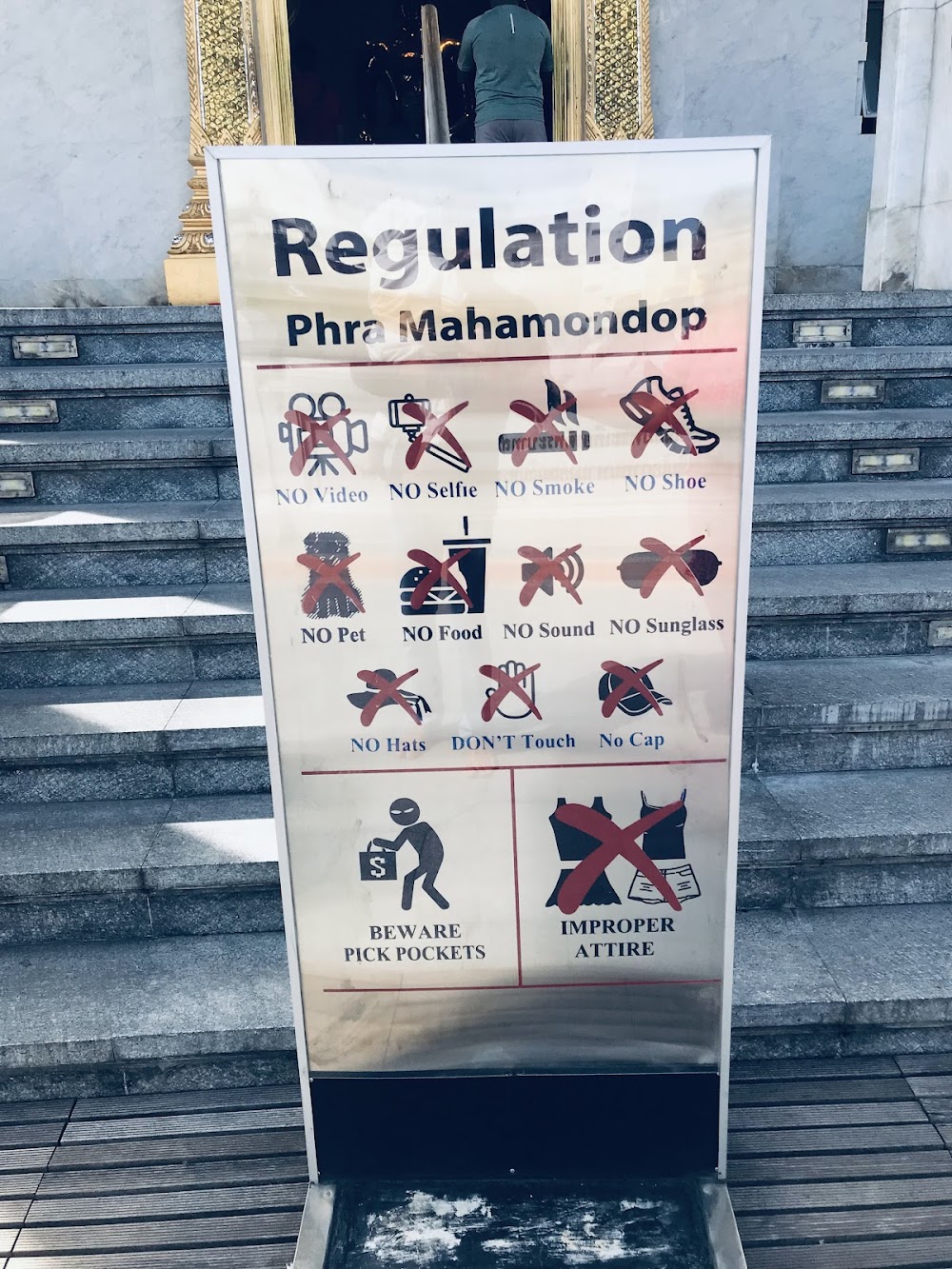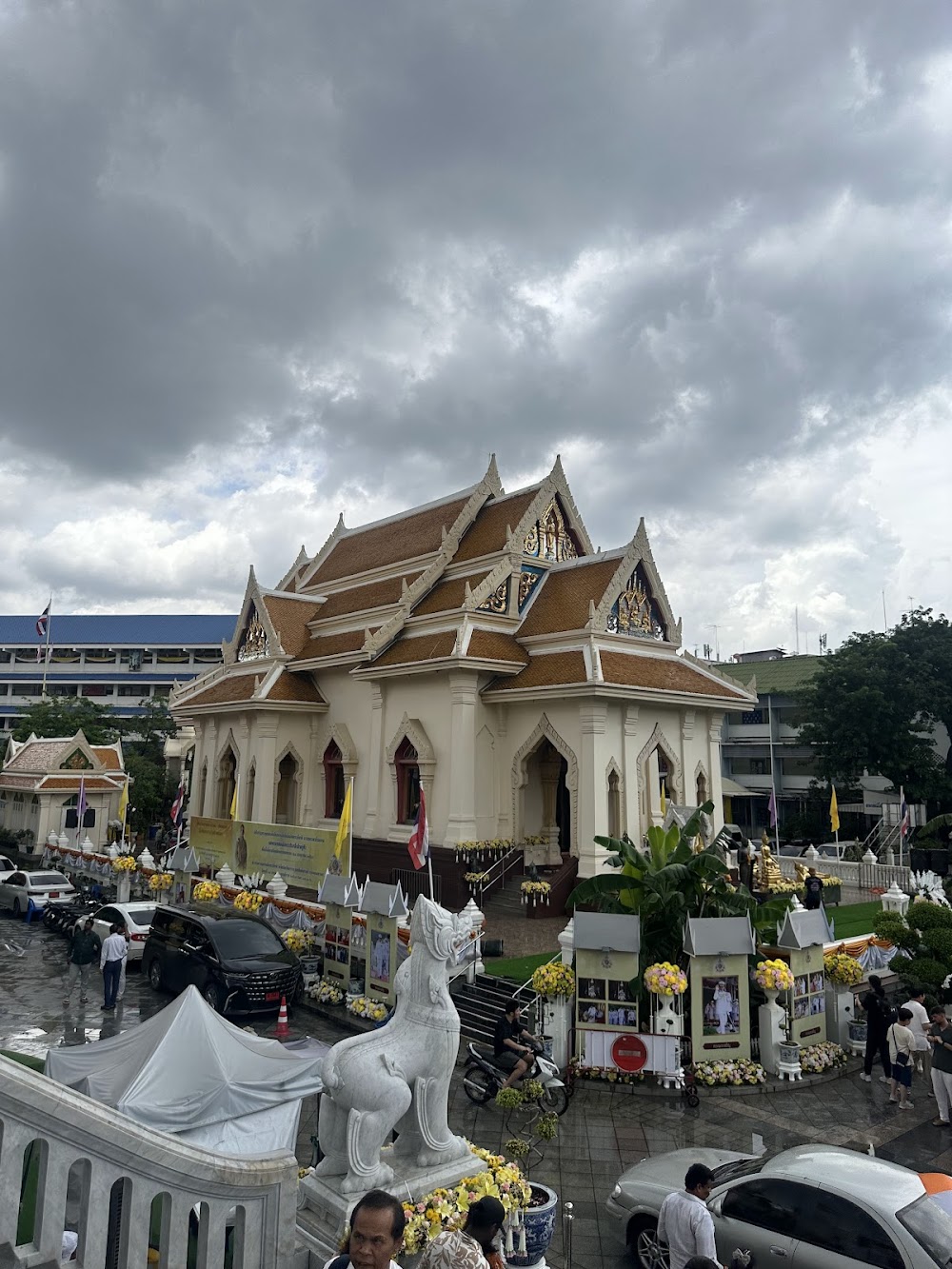Wat Trai Mit is a stunning white Buddhist temple located in the serene landscapes of Northeast Thailand. Renowned for its intricate architecture and striking color, this temple serves as a peaceful retreat for visitors. The temple’s design reflects traditional Thai styles while incorporating unique modern elements, making it a visual marvel. Surrounded by lush greenery, Wat Trai Mit offers a tranquil atmosphere perfect for reflection and meditation. Visitors can explore the ornate interiors adorned with meaningful Buddhist motifs and artwork. The temple is not only a spiritual sanctuary but also a cultural landmark showcasing the rich heritage of Thai Buddhism. Travelers are encouraged to experience the local rituals and practices observed by the resident monks. Wat Trai Mit is easily accessible and welcomes all who seek to understand the beauty of Thai spirituality. Whether you’re a traveler or a local, this temple promises an inspiring visit. Escape the hustle and bustle of nearby cities and immerse yourself in the serenity of Wat Trai Mit.






Wat Trai Mit stands out as a breathtaking white Buddhist temple nestled in the stunning landscape of Northeast Thailand. This temple is often overlooked by tourists yet holds a unique charm that draws visitors interested in culture and spirituality. Its striking white exterior gleams under the sun, giving it an almost ethereal appearance that captivates anyone who approaches. The architecture combines traditional Thai temple design with modern artistic elements, creating a harmonious blend that is visually stunning.
As you step inside, you are greeted by intricate decorations and vibrant murals that tell stories from Buddhist teachings. The interiors are alive with color and detail, inviting contemplation and admiration. The serene ambiance encourages visitors to pause and reflect, making it a perfect spot for meditation or quiet contemplation.
Wat Trai Mit is not just a site of beauty but also a center of spiritual practice. Local monks engage in daily rituals, providing a glimpse into the living traditions of Buddhism. Observing these practices offers insights into the profound rituals that shape the lives of those dedicated to the monastic lifestyle.
The temple grounds are surrounded by lush gardens that enhance the overall tranquility, making it an oasis away from the bustling city life. Wandering through the well-maintained paths, you can find peaceful corners perfect for relaxation. Visitors often take the time to sit quietly and soak in the serene atmosphere, allowing for a deeper connection to the spiritual essence of the space.
For those seeking to delve into the rich tapestry of Thai culture, Wat Trai Mit serves as a gateway into the spiritual heart of the region. Its accessibility and welcoming nature ensure that all who visit leave with lasting memories and a sense of peace. This hidden gem is truly a must-see for anyone traveling through Northeast Thailand, providing not just a visual feast but a meaningful experience. Discover the tranquility and beauty of Wat Trai Mit, where spirituality and artistry converge.
วัดไตรมิตร (ท่าอุเทน, ไทย) - รีวิว - ThailandAgoda.com
Wat Trai Mit is perched on a picturesque hilltop overlooking 888, Soi Uthen 22, 48120, Thailand
Tempio con una storia originale. Si rimane stupiti nel vedere il Budda di 3 metri composto da 5 tonnellate e mezzo di oro 18 carati!
È un tempio situato nella zona di Chinatown. Tempio reale famoso per l’enorme immagine in oro massiccio del Buddha che ospita, noto anche come “Il tempio del Buddha d’oro”.L’immagine del Buddha è chiamata Phra Phuttha Maha Suwan Patimakon che mostra il sottomesso Mara mudra.Per secoli la vera identità e il valore dell’immagine non furono conosciuti, finché per caso negli anni ’50 si scoprì che l’immagine era fatta di oro massiccio, la più grande immagine del Buddha in oro massiccio al mondo. L’origine dell’enorme immagine del Buddha non è esattamente nota. A causa del suo stile si presume che sia stato fuso durante l’era di Sukhothai, il regno che esisteva dal 1238 al 1438 con la città di Sukhothai nel nord della Thailandia come centro.Dopo la scomparsa di Sukhothai e l’ascesa del regno di Ayutthaya, la statua fu probabilmente spostata in un tempio ad Ayutthaya ma nel 1767 Ayutthaya fu distrutta dagli invasori birmani, e l’immagine rimase ad Ayutthaya, senza attirare l’attenzione, e la sua vera origine e valore furono dimenticati (anche perché la statua era coperta di gesso e non mostrava oro).Dopo che il re Rama I ebbe stabilito Bangkok come nuova capitale, ordinò che migliaia di immagini del Buddha fossero portate a Bangkok dalle regioni settentrionali, come Sukhothai e Ayutthaya, a causa della minaccia ancora esistente dei birmani.Nel 1930 fu portata al Wat Tramite, ancora coperta di gesso. Alcuni anno dopo, nel 1955, la statua si ruppe durante lo spostamento per portarla in un Viham appena eretto, e così un monaco scoprì che la statua era ricoperta d’oro.Nel 2008 un edificio di tre piani chiamato Phra Maja Mondop è stato eretto per ospitare il Buddha d’oro.
It is a wonderful temple to see, as always you pay an entrance fee but it is wonderful to see the solid gold Buddha and read the story. Dress appropriately because they won’t let you pass, there are some ladies controlling